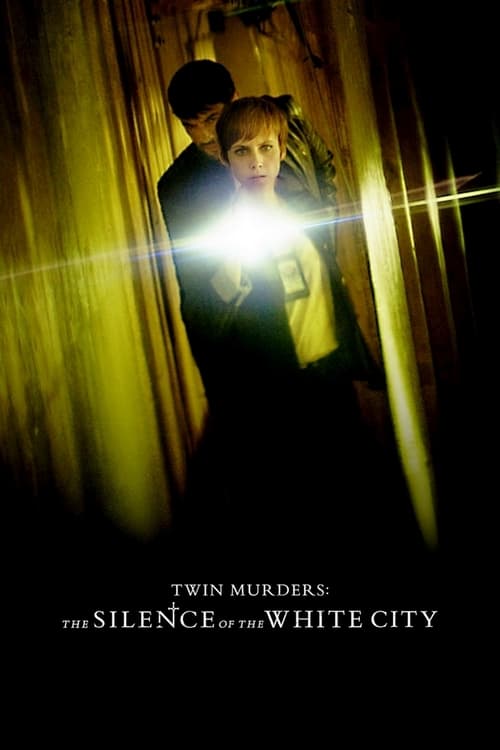
Ask Your Own Question
What is the plot?
What is the ending?
In the ending of "The Platform," Goreng and the child, who he has named Baharat, reach the bottom level of the vertical prison. They discover a young girl who has been left behind, and Goreng decides to send her up as a message of hope. He sacrifices himself to ensure she survives, and the film concludes with the implication that the girl may be the key to change.
As the film approaches its climax, Goreng and Baharat descend to the lower levels of the prison, a stark and oppressive environment that has become increasingly brutal as they move downward. The walls are grimy, and the air is thick with despair. They are weary, both physically and emotionally, having witnessed the depths of human depravity and survival instincts in the levels above.
Upon reaching the final level, they encounter a shocking sight: a young girl, frail and terrified, who has been abandoned in the depths of the prison. This moment is pivotal, as it symbolizes innocence lost in a system designed to pit individuals against one another. Goreng, who has undergone a profound transformation throughout his harrowing experience, feels a surge of protective instinct for the girl. He sees in her the possibility of hope and redemption, a stark contrast to the brutality that has surrounded them.
Goreng and Baharat discuss their options. They realize that the girl represents a chance to send a message to the outside world, a plea for change in a system that has perpetuated suffering. Goreng, understanding the gravity of their situation, makes a selfless decision. He tells Baharat that they must send the girl up to the higher levels, where she can be seen and heard. This act is not just about survival; it is about breaking the cycle of violence and despair that has defined their existence in the Platform.
As Goreng prepares to send the girl up, he embraces her, conveying a sense of warmth and hope. He instructs her to hold on tightly as she ascends, emphasizing the importance of her journey. In this moment, Goreng's internal conflict resolves; he has moved from a place of self-preservation to one of altruism. He understands that his own life is less significant than the potential for change that the girl represents.
Baharat, initially hesitant, ultimately supports Goreng's decision. He recognizes the importance of the girl's survival and the message she carries. As they prepare for the girl's ascent, Goreng and Baharat share a moment of solidarity, united in their desire to see a better future.
In a poignant farewell, Goreng sacrifices himself, allowing the girl to ascend alone. He faces the grim reality of his fate, knowing that he will not escape the Platform. As the girl rises, the camera captures Goreng's expression--one of hope mixed with resignation. He has chosen to give up his life for the possibility of a brighter future for someone else.
The film concludes with the girl being lifted away, leaving Goreng behind in the darkness of the Platform. The final shot suggests that she may be the catalyst for change, a symbol of hope in a world that has been devoid of it. The screen fades to black, leaving the audience to ponder the implications of Goreng's sacrifice and the potential for transformation within a broken system.
Baharat's fate remains uncertain, as he is left in the depths of the prison, but he has been changed by the experience, having witnessed the power of selflessness. The ending encapsulates the film's exploration of humanity, sacrifice, and the possibility of redemption amidst despair.
Is there a post-credit scene?
The movie "The Platform" does not have a post-credit scene. The film concludes with a powerful and ambiguous ending that leaves viewers with much to ponder about its themes of class struggle, survival, and human nature. After the intense journey of the protagonist, Goreng, and his experiences within the vertical prison system, the film ends on a note that invites interpretation, but there are no additional scenes or content after the credits roll.
What is the significance of the character Goreng's choice to enter the vertical prison?
Goreng, the protagonist, voluntarily enters the vertical prison known as 'The Pit' to earn a degree and to experience the system firsthand. His choice reflects a desire for personal growth and a quest for understanding the moral implications of the prison's structure, which ultimately leads him to confront the harsh realities of survival and human nature.
How does the food distribution system in The Platform affect the characters?
The food distribution system in The Platform is a central element that creates tension and conflict among the characters. Each level of the prison receives a platform filled with food that descends from the top. Those on higher levels eat well, while those below often starve. This disparity drives characters to desperation, leading to violence, cannibalism, and moral dilemmas as they struggle to survive.
What role does the character Trimagasi play in Goreng's journey?
Trimagasi, Goreng's cellmate, serves as a mentor and a harsh reality check for Goreng. He introduces Goreng to the brutal survival tactics necessary in The Pit, including the concept of eating the dead. Trimagasi's cynical worldview and experiences shape Goreng's understanding of the prison's dynamics and force him to confront his own values and ethics.
How does the character Miharu impact the story and other characters?
Miharu, a woman who descends through the levels searching for her child, represents hope and the instinctual drive to protect loved ones. Her presence disrupts the status quo, as she challenges the other characters' perceptions of survival and morality. Her tragic fate highlights the emotional toll of the prison system and serves as a catalyst for Goreng's transformation.
What is the significance of the final act involving the child and the message Goreng tries to send?
In the final act, Goreng's decision to send the child back up as a message symbolizes hope and the possibility of change within the oppressive system of The Pit. His act of sacrifice and the belief that the child can inspire others to challenge the status quo reflect Goreng's evolution from a passive participant to an active agent of change, embodying the film's critique of societal structures.
Is this family friendly?
The Platform, produced in 2019, is not family-friendly and contains several potentially objectionable or upsetting scenes that may be distressing for children or sensitive viewers. Here are some aspects to consider:
-
Graphic Violence: The film features intense scenes of violence, including physical confrontations and injuries that can be quite disturbing.
-
Cannibalism: There are moments that depict extreme hunger leading to cannibalistic behavior, which can be very unsettling.
-
Psychological Distress: Characters experience significant mental and emotional turmoil, including despair, hopelessness, and existential dread.
-
Nudity and Sexual Content: The film includes nudity and sexual situations that may not be appropriate for younger audiences.
-
Themes of Class Struggle and Survival: The narrative explores dark themes related to social hierarchy, survival at any cost, and moral dilemmas, which can be heavy and thought-provoking.
-
Depictions of Death: There are scenes that involve death and dying, which can be upsetting for viewers.
Overall, The Platform presents a bleak and challenging narrative that may not be suitable for children or those who are sensitive to such content.


































